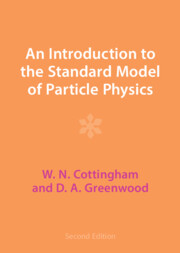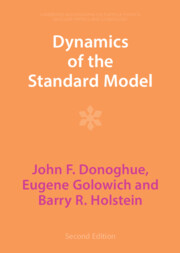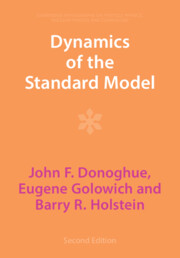The Standard Model
This book was first published in 2006. The standard model brings together two theories of particle physics in order to describe the interactions of subatomic particles, except those due to gravity. This book uses the standard model as a vehicle for introducing quantum field theory. In doing this the book also introduces much of the phenomenology on which this model is based. The book uses a modern approach, emphasizing effective field theory techniques, and contains brief discussions of some of the main proposals for going beyond the standard model, such as seesaw neutrino masses, supersymmetry, and grand unification. Requiring only a minimum of background material, this book is ideal for graduate students in theoretical and experimental particle physics. It concentrates on getting students to the level of being able to use this theory by doing real calculations with the minimum of formal development, and contains several problems.
Reviews & endorsements
"An elegant and complete treatment of the Standard Model at tree level... The first good, modern treatment of the Standard Model, in a format suited for a one or two semester course on particle physics for beginning or graduate students."
Daniel N. Kabat, Mathematical Reviews
Product details
April 2012Paperback
9781107404267
560 pages
246 × 189 × 29 mm
0.99kg
Available
Table of Contents
- List of illustrations
- List of tables
- Preface
- Acknowledgments
- Part I. Theoretical Framework:
- 1. Field theory review
- 2. The standard model: general features
- 3. Cross sections and lifetimes
- Part II. Applications: Leptons:
- 4. Elementary boson decays
- 5. Leptonic weak interactions: decays
- 6. Leptonic weak interactions: collisions
- 7. Effective Lagrangians
- Part III. Applications: Hadrons:
- 8. Hadrons and QCD
- 9. Hadronic interactions
- Part IV. Beyond the Standard Model:
- 10. Neutrino masses
- 11. Open questions, proposed solutions
- Appendix A. Experimental values for the parameters
- Appendix B. Symmetries and group theory review
- Appendix C. Lorentz group and the Dirac algebra
- Appendix D. ξ-gauge Feynman rules
- Appendix E. Metric convention conversion table
- Select bibliography
- Index.







